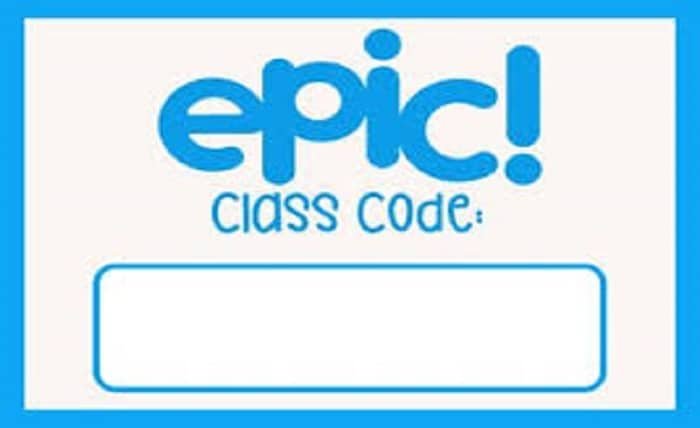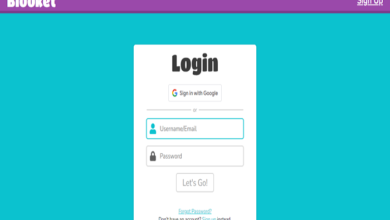
In the fast-paced world of technology and healthcare, an Epic Class Code plays a significant role in organizing and categorizing various data. Whether you’re in the healthcare industry or working with enterprise software systems, understanding how Epic Class Codes work is vital for streamlining operations, improving efficiency, and ensuring data integrity. In this blog post, we will break down what an Epic Class Code is, how it works, and why it is important for various industries. Let’s explore the concept in detail.
Table of Contents
ToggleWhat is an Epic Class Code?
An Epic Class Code refers to a system of classification used within Epic Systems Corporation’s electronic health record (EHR) and health management software. Epic Systems, a leader in healthcare technology, uses these codes to categorize and manage various aspects of patient care, from diagnoses to treatments. The class codes help healthcare providers and institutions organize data efficiently, improving patient care and the overall management of medical records. These codes are essential for grouping similar items together, such as diagnoses, medications, and medical procedures, in a standardized format that can be easily retrieved and analyzed.
How Does an Epic Class Code Work?
An Epic Class Code functions as a part of the larger Epic Systems software ecosystem, which is used by healthcare organizations worldwide. It is designed to categorize specific groups of items, such as patients, diagnoses, tests, and medications. Each class code is linked to a specific area or group within the Epic system, making it easier for healthcare professionals to access, update, and analyze data. The system’s functionality allows users to filter and retrieve relevant data based on the class code assigned to a particular medical record or patient case.
For example, a class code might be used to group together all types of blood tests, allowing a healthcare provider to pull up a list of relevant test results for analysis. The use of Epic Class Codes in this way improves workflow efficiency, reduces errors, and enables healthcare providers to deliver more timely and accurate care to patients.
Types of Epic Class Codes
There are various types of Epic Class Codes used across different aspects of Epic Systems software. These can be broadly categorized into a few key areas:
- Diagnosis Class Codes – These codes are used to categorize different medical conditions and diseases.
- Procedure Class Codes – These codes are assigned to various medical procedures and treatments performed in healthcare settings.
- Medications Class Codes – Used for categorizing prescription medications and over-the-counter drugs.
- Lab Test Class Codes – These are used to organize the results of various laboratory tests and analyses.
- Patient Class Codes – These codes help categorize patient types, such as inpatient, outpatient, or emergency room patients.
By using distinct codes for each type of data, Epic Systems ensures that medical professionals can quickly find the information they need without confusion.
Why Are Epic Class Codes Important in Healthcare?
The use of Epic Class Codes in healthcare is fundamental to managing and accessing patient information efficiently. As hospitals and healthcare systems continue to digitize patient records, the need for standardized classifications grows. Epic Class Codes provide a structured method of organizing data, which ensures that patient information is accurate, up-to-date, and easily accessible.
For example, a healthcare provider may need to review a patient’s diagnosis, lab results, and prescribed medications. With the help of Epic Class Codes, each of these pieces of information is categorized and linked, making it simpler to review the patient’s history in one place. Furthermore, accurate coding can improve clinical outcomes, reduce administrative errors, and enhance the quality of care provided to patients.
Epic Class Codes and Interoperability
One of the key benefits of Epic Class Codes is their role in improving interoperability between different healthcare systems. Interoperability refers to the ability of different information systems to exchange and interpret shared data. When Epic Class Codes are used, they create a standardized method of organizing medical data, which can be understood and accessed by other healthcare providers, even if they are using different systems.
This ensures that patient information can be easily shared between different facilities, such as hospitals, clinics, and laboratories, without the risk of data misinterpretation or errors. As healthcare becomes more interconnected through technology, Epic Class Codes help streamline this process, making it easier for healthcare providers to collaborate and provide comprehensive care to patients.
Implementing Epic Class Codes in Your Healthcare Facility
Implementing Epic Class Codes within a healthcare facility can have a significant impact on operational efficiency and patient care. However, the implementation process requires careful planning and collaboration between various departments. Healthcare facilities must ensure that their staff is properly trained in using Epic Class Codes to input data accurately and consistently.
The first step in the implementation process is identifying the appropriate class codes for your facility’s needs. This involves collaborating with medical staff, IT teams, and administrators to ensure that the coding system is tailored to the specific requirements of the facility. Once the codes are set up, training and ongoing support are essential to ensure that everyone is using the system correctly.
Challenges with Epic Class Codes
While Epic Class Codes offer a number of benefits, they can also present challenges. One of the main difficulties healthcare providers face is the complexity of categorizing data accurately. With thousands of potential codes for diagnoses, medications, and procedures, there is always the risk of misclassification or improper coding. This can lead to errors in patient care, billing issues, and delays in treatment.
To overcome these challenges, healthcare organizations must invest in continuous staff training and software updates. Additionally, having a strong quality control process in place to verify coding accuracy can help mitigate the risk of mistakes.
How Epic Class Codes Improve Clinical Workflow
One of the key advantages of Epic Class Codes is their ability to improve clinical workflow. By standardizing the categorization of medical data, healthcare providers can access patient records and information much faster. This efficiency allows clinicians to focus on patient care rather than navigating through disorganized or unstructured data.
Epic Class Codes also improve the ability to track patient progress and treatment history. With accurate and easily accessible data, healthcare providers can make more informed decisions about treatment plans, leading to better outcomes for patients.
Epic Class Codes in Research and Data Analysis
In addition to improving clinical workflow, Epic Class Codes also play a crucial role in healthcare research and data analysis. By categorizing patient data into structured classes, researchers can easily access large datasets that are necessary for medical studies. This makes it easier to analyze trends, study disease progression, and evaluate treatment efficacy.
For example, researchers can use Epic Class Codes to filter patient records based on specific conditions, medications, or treatments. This capability facilitates targeted research, leading to more accurate and relevant findings.
Future of Epic Class Codes in Healthcare
As healthcare continues to evolve, the role of Epic Class Codes will likely expand and improve. With the rise of artificial intelligence (AI) and machine learning (ML) technologies, there is potential for even greater automation in the classification and organization of medical data. These technologies could streamline the process further, reducing human error and improving the efficiency of healthcare providers.
Additionally, as more healthcare organizations adopt Epic Systems and similar software, the importance of standardized coding systems like Epic Class Codes will grow. This will help ensure that healthcare data remains accurate, consistent, and accessible across the global healthcare network.
Conclusion
Epic Class Codes are an essential component of Epic Systems’ software platform, providing a standardized method for organizing and managing medical data. By categorizing everything from diagnoses to lab results, these codes streamline clinical workflows, improve patient care, and enhance data analysis. Although there are challenges associated with their implementation, the benefits far outweigh the difficulties. As healthcare technology continues to advance, Epic Class Codes will remain at the forefront of efficient, accurate, and secure data management.
FAQs
- What are Epic Class Codes used for?
Epic Class Codes are used to categorize and organize various aspects of healthcare data, such as diagnoses, medications, and procedures. - Why are Epic Class Codes important?
These codes help streamline workflows, improve patient care, ensure accurate data, and promote interoperability across healthcare systems. - How do Epic Class Codes improve clinical workflow?
By organizing data in a standardized format, Epic Class Codes allow healthcare providers to access and interpret patient information more quickly and efficiently. - Are Epic Class Codes used in all healthcare facilities?
Epic Class Codes are used primarily in facilities that utilize Epic Systems software. However, they are not universally adopted in all healthcare systems. - Can Epic Class Codes be customized for specific healthcare facilities?
Yes, Epic Class Codes can be tailored to meet the specific needs of individual healthcare organizations during implementation.





